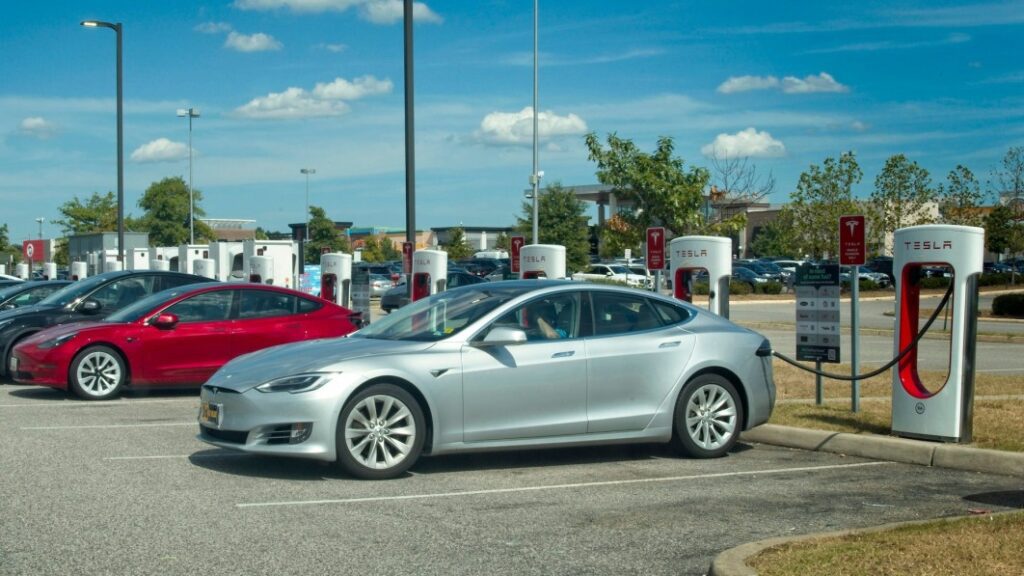Tesla opening its Supercharger network to rivals could be a brilliant marketing move from a company that famously doesn't advertise

For the first time,
Tesla is opening up its Superchargers in the US to drivers of non-Tesla cars.
Robert Knopes/UCG/Universal Images Group via Getty Images
Tesla plans to open 3,500 of its fast-charging plugs to all electric-car owners by the end of 2024.
Until now, Tesla’s Supercharger network was only for Tesla owners in the US.
Some experts say the plan could boost Tesla’s brand and ultimately help it sell more cars.
If you own any electric car that isn’t a Tesla, you’ve probably gazed longingly at the brand’s sleek Supercharger stations, which are common and famously easy to use, but historically off-limits to outsiders.
But that’s all changing. Tesla has decided to open up thousands of its roadside fast-charging plugs to all electric-vehicle owners by the end of 2024. The move brings Elon Musk’s firm a new revenue stream and allows it to access public funding for charging infrastructure. Some industry experts also think welcoming outsiders into Tesla’s walled garden could be a smart marketing move, particularly for a company that rejects traditional advertising.
According to Loren McDonald, CEO of EV industry consultancy EVAdoption, the Supercharger network serves as Tesla’s single biggest marketing tactic. Light-years ahead of other charging providers in terms of reliability, convenience, and number of locations, the sprawling network helps relieve the anxieties of ditching gasoline and attracts buyers.
Inviting owners of electric Fords and Porsches to plug in at some locations may be Musk’s crafty way of building the Tesla brand and showcasing its technology to potential customers, McDonald told Insider.
“That additional brand exposure is probably a big part of the reasoning behind this,” he said.
Sam Abuelsamid, an auto industry analyst at Guidehouse Insights, agrees that expanding Supercharger access could help Tesla sell more cars. Charging takes a while and is generally a more social activity than quickly grabbing gas, presenting an opportunity for Supercharger patrons to get familiar with Tesla’s vehicles, he told Insider.
“Because Tesla doesn’t have traditional dealerships, there are a lot fewer places where you can just stop and browse,” he said.
Tesla did not respond to a request for comment.
After years of tremendous sales growth, Tesla has faced questions recently about how whether the voracious appetite for its cars will last. This year, it’s slashed prices across its lineup in a bid to move more vehicles.
The charging plan is a gamble and could also have the opposite effect, experts said. Some Tesla drivers may realize they don’t need to buy from Musk to reap the benefits of Supercharger infrastructure. They may peek inside a Rivian R1T or schmooze with a Volkswagen ID.4 owner and realize a different vehicle better fits their needs.
“When the Ford Mustang Mach-E driver plugs in next to the Tesla Model Y driver and they chat, who knows? It could go either way,” McDonald said.
Analysts see another risk: A boom in demand for limited charging stalls could frustrate Tesla owners by crowding popular stations. Moving forward, Tesla will need to be careful not to degrade the experience too much for its existing customers, Abuelsamid said.
“You don’t want to abandon the customer base that got you to where you are today,” he said. “But at the same time you ideally want to get some of those other potential advantages.”



